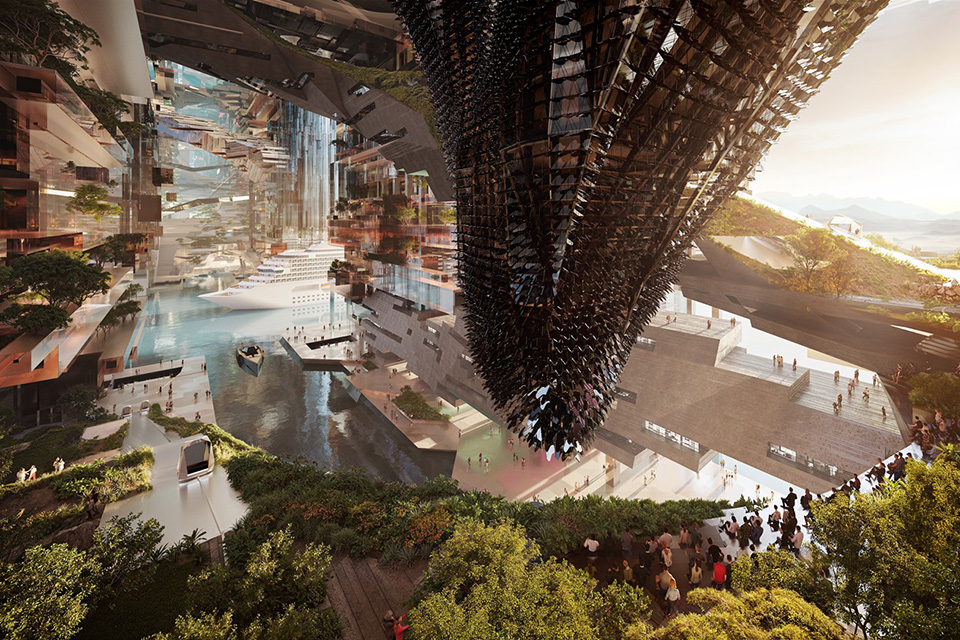- News
King Salman International Airport To Be World’s Largest By 2030
The King Salman International Airport covers 52 square kilometers. It is set to accommodate 120 million passengers by 2030.
Article Summary:
- Saudi Arabia’s King Salman International Airport is gearing up to be the world’s largest airport by 2030.
- The airport covers an area of approximately 57 square kilometers. This includes six parallel runways, airport support facilities, residential and recreational facilities, and retail outlets.
- It is expected to accommodate up to 120 million passengers by 2030, and 185 million passengers by 2050, with a processing capacity for 3.5 million tons of cargo by 2050.
- Saudi Arabia hopes to receive LEED platinum certification for the airport project’s sustainability, as it will be powered by renewable energy.
Saudi Arabia’s King Salman International Airport is set to be the world’s largest airport by 2030.
According to the Public Investment Fund (PIF), a sovereign wealth fund in Saudi Arabia, the airport covers an area of approximately 57 square kilometers (22 square miles or 5,700 hectares).
PIF described the airport as an “aerotropolis created around seamless passenger journeys, world-class efficient operations, and innovation.”
Crown Prince Mohammed bin Salman announced the undertaking on November 28, 2022.
The King Salman International Airport will have a provision for six parallel runways as well as 12 square kilometers (4.63 square miles or 1,200 hectares) of airport support facilities, residential and recreational facilities, and retail outlets.
It is expected to accommodate up to 185 million passengers and have a processing capacity of 3.5 million tons of cargo by 2050.
It is estimated that the cost of the airport project is more than SAR 187.5 trillion (USD 50 billion).
With the construction of the airport, Saudi Arabia aims to boost transport, trade, and tourism and cement Riyadh’s position as a global logistics hub.
Sustainability in mind
Saudi authorities are hoping to secure LEED platinum certification as the airport was designed with sustainability in mind, powered by green and renewable energy.
The design and construction of the King Salman International Airport is being overseen by Foster + Partners, a UK-based architecture and design firm.
LEED stands for “Leadership in Energy and Environmental Design,” a system used to rate green buildings.
The LEED rating system looks at factors such as reducing the contribution to global climate change, enhancing individual human health, protecting and restoring water resources, protecting and enhancing biodiversity and ecosystem services, promoting sustainable and regenerative material cycles, and enhancing a community’s quality of life.
Apart from the airport’s sustainability efforts, it will also carry the Salmani architectural style, which is characterized by a balance between different elements.
Riyadh as a power economy
In line with Saudi Arabia’s Vision 2030, the opening of the King Salman International Airport is set to establish Riyadh as one of the world’s top ten city economies.
Another aim of the King Salman International Airport project is to grow Riyadh’s population to 15-20 million by 2030.
It is expected to generate SAR 27 billion (USD 7.1 billion) yearly to Saudi Arabia’s non-oil GDP and provide jobs to 103,000 workers.
“It is an economic project with a double economic value, which will resonate in all cities of the Kingdom, as many research studies have confirmed the close interdependence between the services airports provide and regional development,” he said.
Dr. Abdullah bin Ahmed Al-Maghlouth, a member of the Saudi Economic Association, told Arab News, “The more passengers, flights and cargo transport, the higher the gross domestic product, wages and incomes become.”
“They encourage the growth of the city, build more hotels and restaurants, provide more services and express transportation to accommodate visitors and tourists.”
“Riyadh’s population is also expected to exceed 15 million individuals in 2030, and the city has proven its ability to attract visitors and tourists from all over the world as it is home to the largest entertainment festivals globally.
Photo: X/Public Investment Fund (@PIF)






